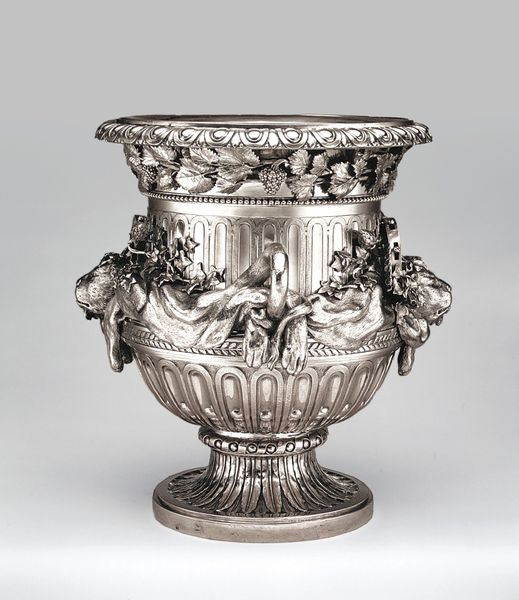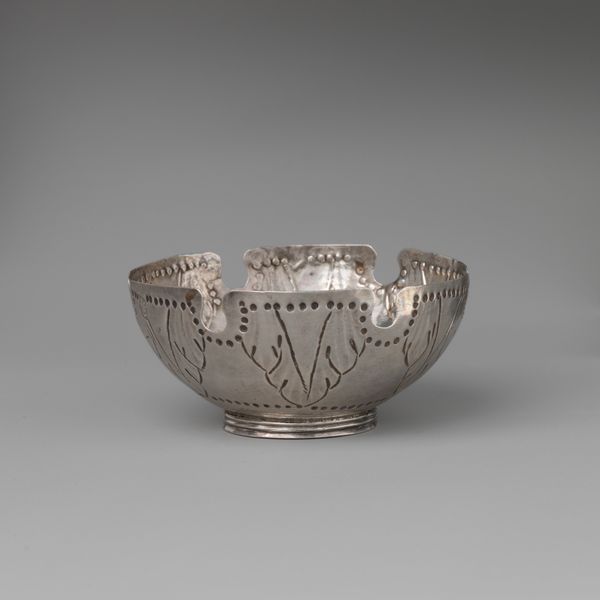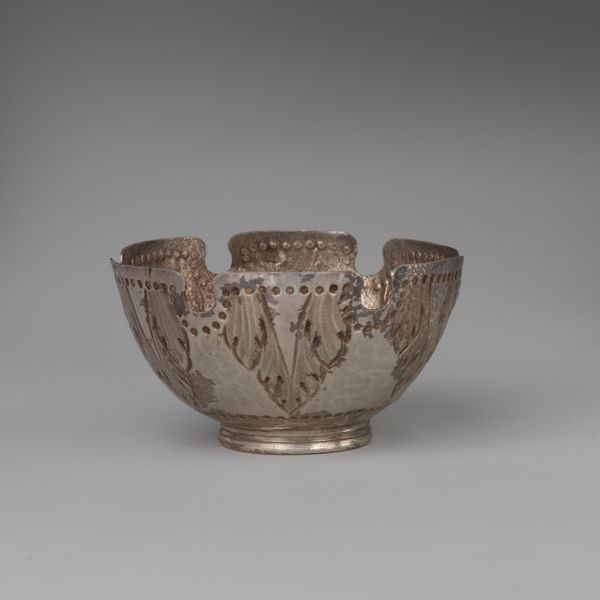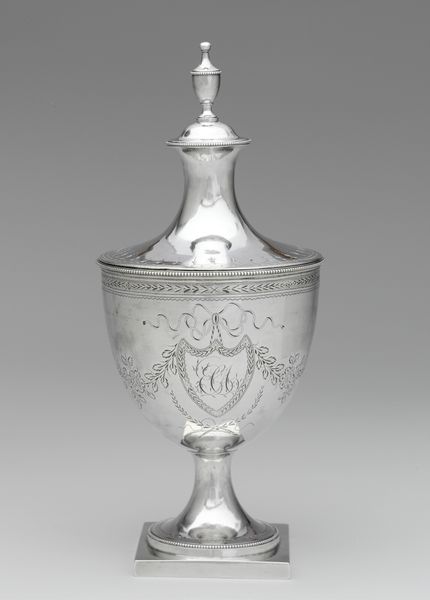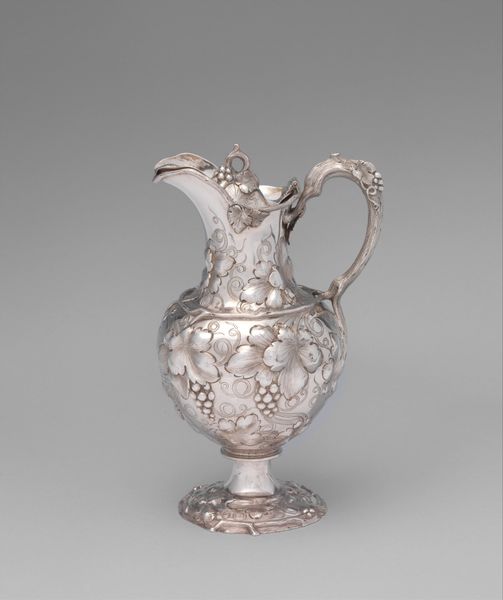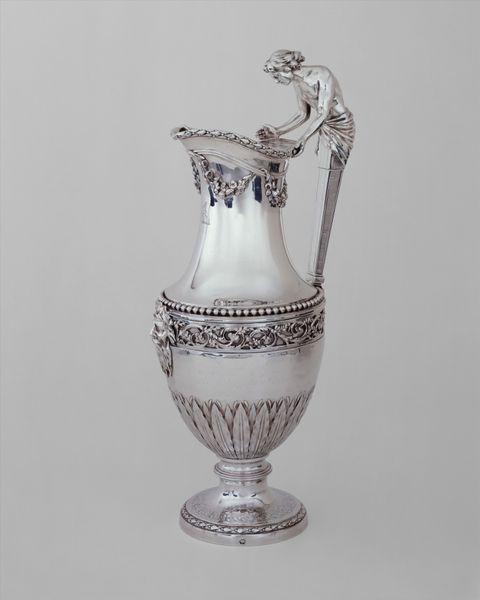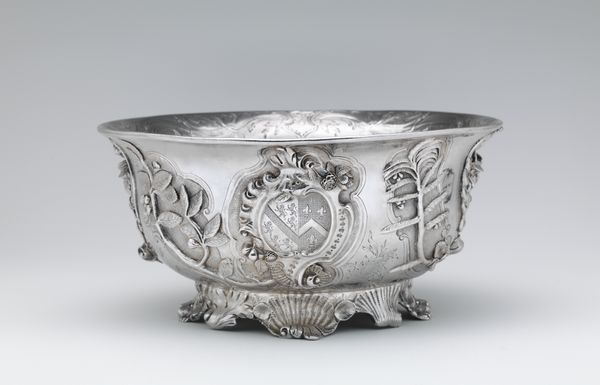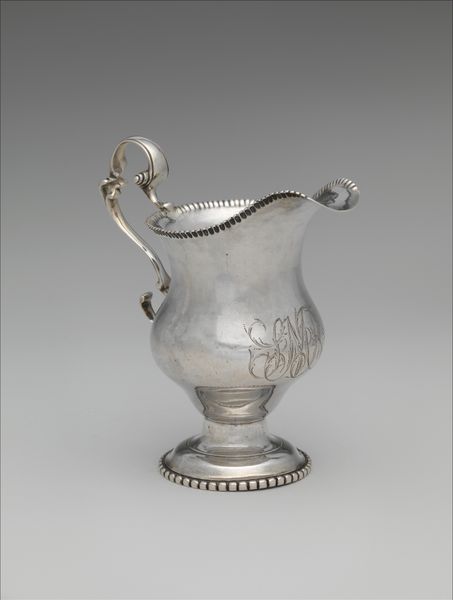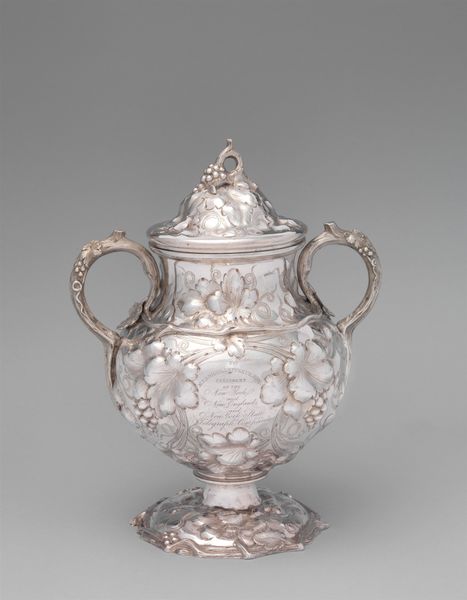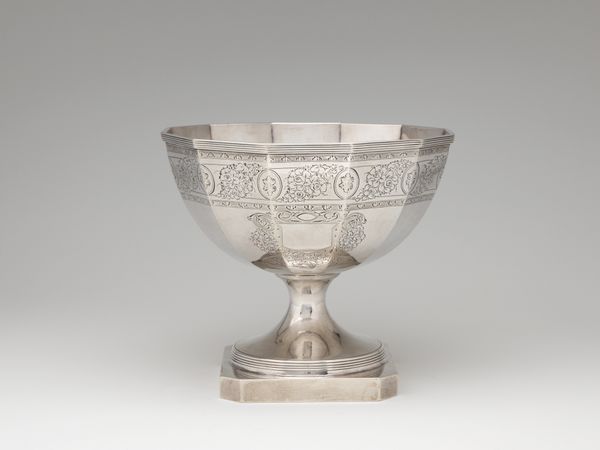
Dimensions: 5 3/8 x 5 3/16 in. (13.7 x 13.2 cm)
Copyright: Public Domain
Curator: This elegant piece is a silver slop bowl, crafted by Wood and Hughes around 1862-1863. It's currently held in the collection of the Metropolitan Museum of Art. Editor: It strikes me as remarkably ornate, a curious mix of austerity in form and elaborate detail in the relief. It gives the impression of reserved opulence. Curator: Indeed. The chasing and relief work are quite exquisite. Silver as a material commodity speaks to consumption patterns and status displays of the rising merchant classes during this period. How does the ornamentation strike you? Editor: The composition is quite Baroque, yet contained. See how the interior scene depicting domestic objects and furniture gets framed by floral motifs? There’s an attempt at balance, yet the details risk overwhelming the vessel’s shape. Curator: Perhaps the density of the relief speaks to the silversmiths wanting to demonstrate their skill, and ultimately the economic value, by showcasing hours of labor? The materials and artistry elevates it beyond simple utility, don't you think? Editor: Undeniably. But what about the visual rhythm, how your eye travels across the surface, encountering these miniature narrative vignettes framed by botanical ornament? This dialogue between representation and abstraction is quite captivating. Curator: Good point. The functionality almost becomes secondary to the object as a signifier of wealth and taste, right? I imagine the makers taking pride in transforming raw silver into this complex piece. We're able to appreciate not only what it is but what it meant, how it functioned socially. Editor: Yes, while acknowledging the maker's ingenuity in transmuting base metal into sculptural form and the social history. Focusing on these intrinsic properties makes appreciating this all the more richer. Curator: The bowl connects us with a specific historical moment of production, labor, and exchange. A testament to human creativity intersecting with socioeconomic forces. Editor: And I'm left pondering the way visual harmony can emerge even within densely ornate objects.
Comments
No comments
Be the first to comment and join the conversation on the ultimate creative platform.

